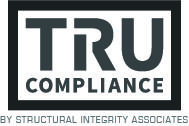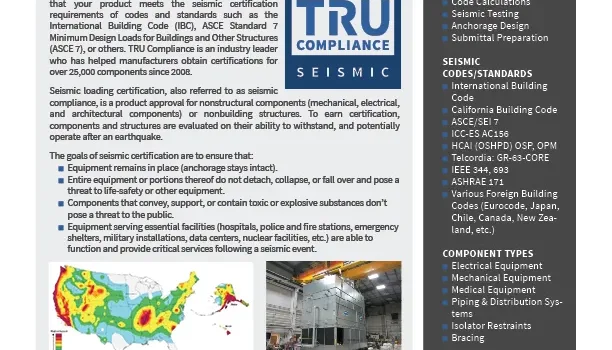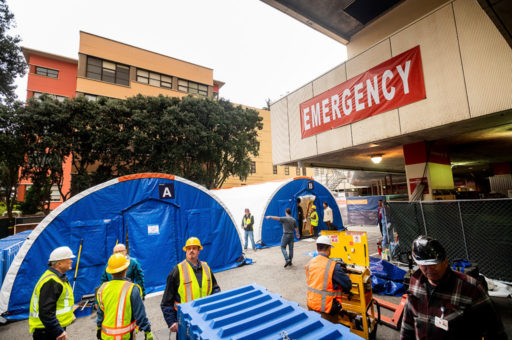This brochure features an overview of TRU Compliance Seismic Certification. Download: TRU Seismic Certification

The History of Seismic Certification
Requirements for seismic certification date back to the early 1970s with regulations for nuclear power generating facilities and the need to ensure safe shutdown of critical systems following strong ground shaking. The requirements came about because of the significant risk to the public in the event of a failsafe system malfunctioning leading to reactor failure.
Over the years, seismic certification requirements have seen their integration into building codes and standards such as IEEE 693 for power substations (aimed at protecting our utility grid) and UFC 3-310-04 for critical government and military applications (with the goal of operation of key national defense assets).
The first major implementation of special seismic certification in the building code came with the 2000 International Building Code (2000 IBC). Although codified in the IBC, there had been limited enforcement of special seismic certification requirements under the initial 2000 IBC requirements until California’s adoption of the IBC in 2007 California Building Code (CBC).
Following California’s adoption, there has been considerable growth in the understanding, implementation and enforcement of seismic certification requirements, in part because of California OSHPD (now known as HCAI) enforcement for hospitals. During the initial adoption of the 2007 CBC, HCAI created the OSP preapproval program which has helped to create an extensive array of seismically certified mechanical and electrical components. The passage of time has seen consistently greater understanding and enforcement of code requirements across the United States and abroad.



